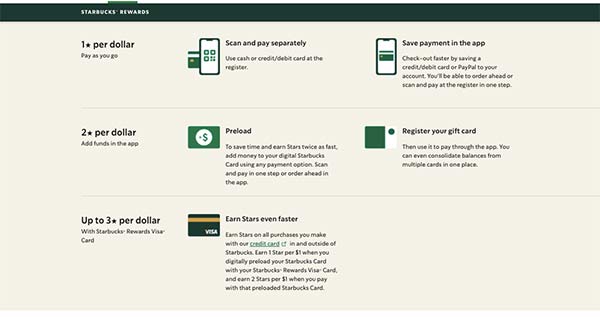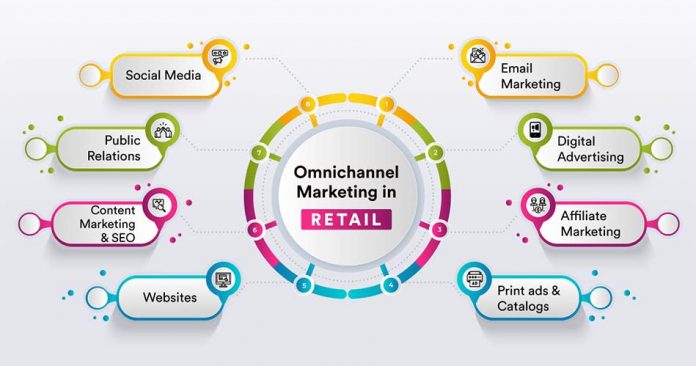Table of Contents
Google adds that 90% of multiple device owners switch between their devices at least three times a day to complete a task. Additionally, 59% of shoppers prefer to research their purchase online, even if they plan to buy in-store.
Know What Your Users Want
In 2017, HBR interviewed 46,000 shoppers to understand their shopping behavior and found that 73% of respondents used multiple channels throughout their shopping journey.
They also found that customers using multiple channels were often more valuable to retailers. For example, customers using more than four channels in the survey spent 9% more than the ones using only a single channel. Among the omnichannel shoppers, those who conducted online research before shopping ended up spending up to 13% more in-store than others in the group.
Clearly, your customers like to shop from multiple devices, at their convenience, and expect a consistent experience across all the touchpoints. For you, this increases the pressure of being present in multiple places at one go while maintaining a consistent experience across touchpoints. Of course, you will reap the results in terms of higher revenue and user engagement. For instance, a marketing campaign using three or more channels can outperform two- or single-channel campaigns by 250% in engagement and purchase rates.
Switching to an Omnichannel Marketing Strategy
Omnichannel marketing is essential if you wish to create a positive experience for your customers. It helps you build engagement, reduce churn and drive positive customer relations.
Take Starbucks, for instance. As you’d already know, your favorite coffee shop takes your convenience seriously, and this also reflects on their rewards app. If you have been to Starbucks, you’d know that you are issued a free rewards card that can be used whenever you make a purchase. However, unlike traditional reward programs, Starbucks doesn’t require you to carry your gift card around.
You can always check and reload your card online, and you will find that all your changes will be synced across channels in real-time. So much so that if you reload your balance while ordering your coffee, the cashier will be updated by the time you are ready to make the payment.

Amazing right? If you’d like to create to amaze your users similarly, here are some actionable tips on creating an effective omnichannel marketing strategy:
Integrate Live Chat For Customer Support
Fast and efficient customer service is crucial to your user experience. By combining live chat with your service channels, you not only improve customer service but also revolutionize marketing through real-time support.
In the multi-channel approach, each customer support touchpoint must start from the beginning. However, once you switch to omnichannel marketing, your staff can view previous interactions to stay updated with each user’s journey. For instance, advanced live chat software lets you save the transcript of every chat conversation. These transcripts can be referred to during future interactions. You can also analyze user interactions to identify common pain points and topics for your future marketing material.
Use Chatbots For Lead Generation And Marketing
Chatbots are great for automating your support and double up as effective marketing and lead generation tools. Starting with customer service, chatbots make it possible to offer 24/7 support across digital touchpoints by answering straightforward queries or directing users to relevant FAQs for self-service.
Furthermore, chatbots can capture information from your site visitors at all times during the day, even when your staff is sleeping. Thus, your chatbot works around the clock to capture lead information and even pre-qualify visitors with a set of pre-determined questions before passing on the information to relevant teams in your company.
On the marketing front, chatbots can be used to send friendly and personalized reminders to on-site visitors without being pushy or ‘salesy’.
Suppose a customer left a pair of shoes in their cart and wasn’t responsive to your abandoned cart emails. What do you do? Well, you can always use your chatbot to send a friendly reminder the next time they visit your site.
“Hey Susan, you left [product name] behind when you visited us last. We appreciate your taste and have moved the item to your wishlist for you. Just so you know, there is XX number of this product remaining in your size/color.”
Note how this personalized message appreciates Susan on her choice before reminding her to complete the purchase. It also creates a sense of excitement or urgency by hinting at the remaining items in the store.
Use Multiple Options To Reach Out To Subscribers
Typically, marketers benefit from using a holistic approach to marketing so that each channel can be used to supplement the others to drive better results. For instance, email marketing remains a popular marketing strategy. But what if a subscriber is bogged down by information overload on a busy day or during the holiday season? In times like these, when you don’t find subscribers responding to emails, you may consider resending your campaign via SMS to increase the chances of your message being read.
Match Your Content To User Requirements
Content is the backbone of every marketing campaign ever. But you do need to tweak your content according to the touchpoint, as relying on a batch and blast technique will lead to a poor user experience.
To get started with your omnichannel content plan. Consider the type of content preferred by your users and when? For instance, photos and videos do well on Facebook and Instagram, while you can use text-based posts for newsletters and on-site blogs. Furthermore, it is important to segment your audience and personalize the content for them, depending on their preferences and position in the sales funnel.
Going Omnichannel: Parting Thoughts
To deliver a truly omnichannel experience, you must ensure consistency across customer touchpoints. Which requires you to deeply understand your customers. You need to understand their challenges and goals at every step of the journey to curate experiences that add the maximum value to their relationship with your brand. To achieve this, you need to figure out their preferences and anticipate their needs through regular feedback, as well as social listening.
Furthermore, if the various departments in your company like sales, marketing, PR, support, etc., work independently of each other, you need to work towards breaking down the organizational siloes that impede the flow of information and prevent your brand from creating a truly omnichannel experience.










![How to Fake Location on Snapchat Map in 2024 [Ultimate Guide] Fake Location on Snapchat](https://techenworld.com/wp-content/uploads/2024/02/Fake-Location-on-Snapchat-80x60.jpg)




